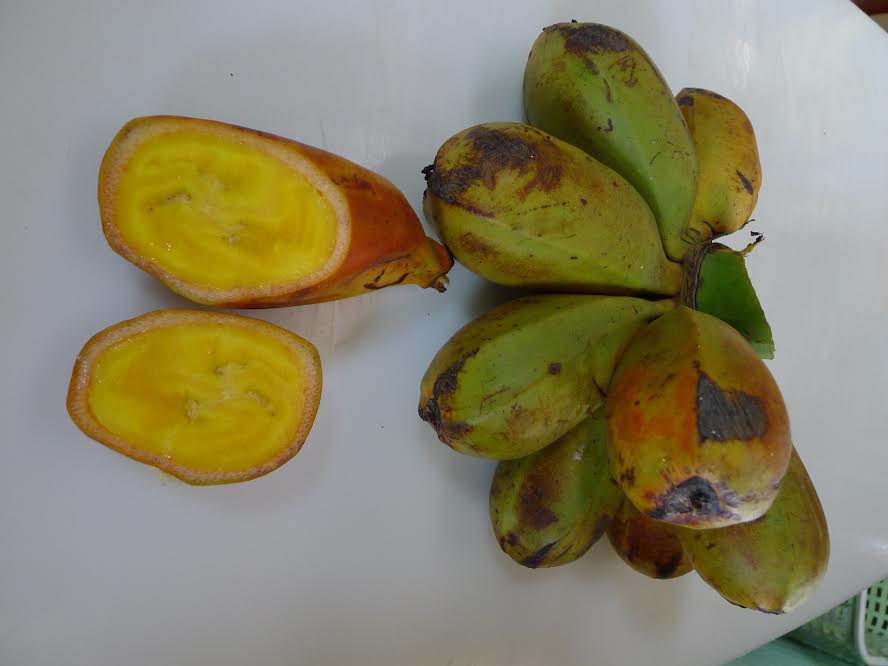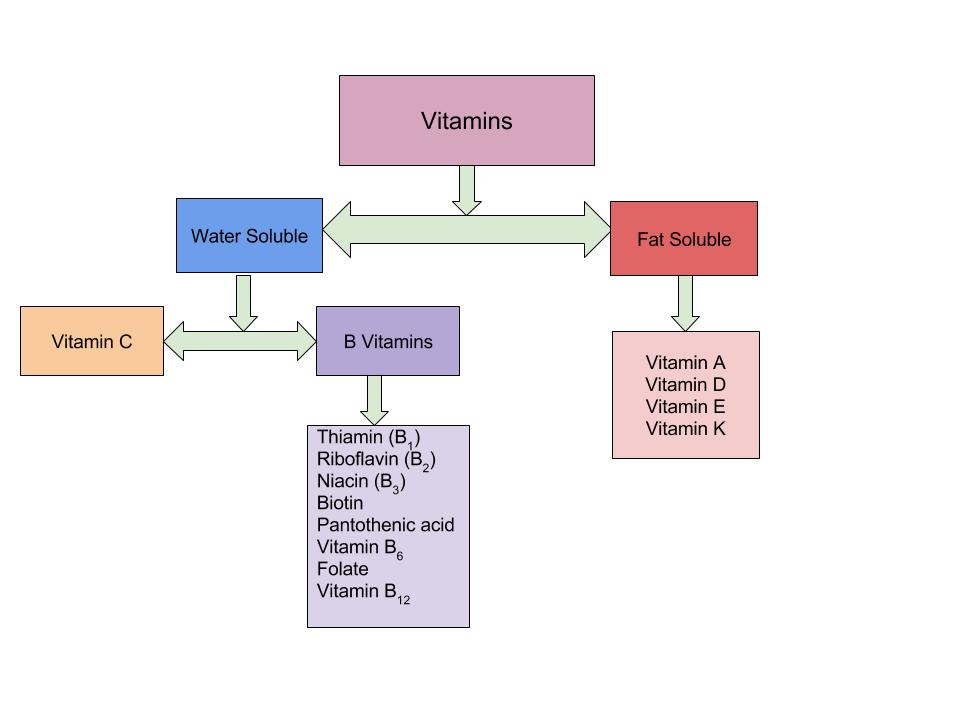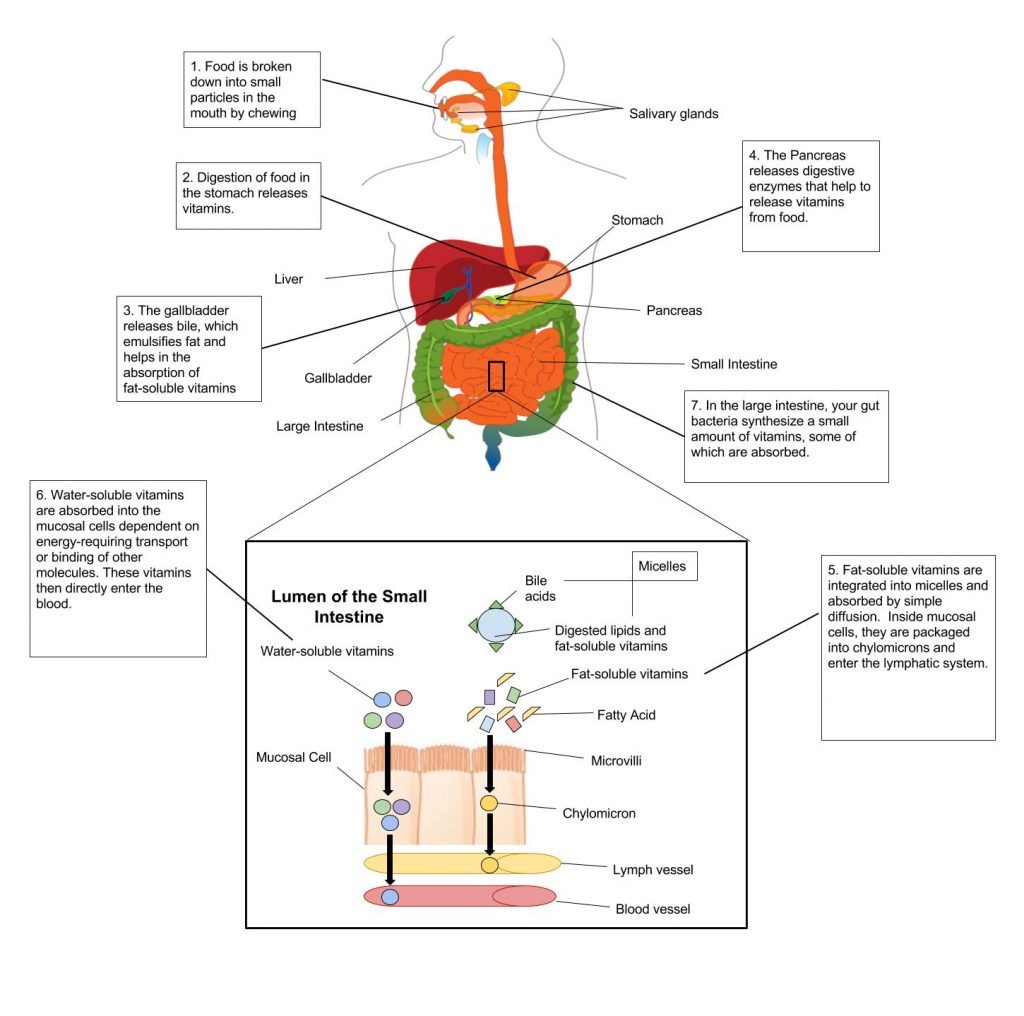10.1 – Introduction to Vitamins
Learning Objectives
- Define the term vitamin.
- Compare and contrast fat-and water-soluble vitamins and identify vitamins that fit in each category.

Vitamins are obtained from the different types of foods that we consume. If a diet is lacking a certain type of nutrient, a vitamin deficiency may occur. The traditional diet in Pohnpei (an island in the Federal States of Micronesia) consisted of a diet rich in local tropical produce such as bananas, papaya, mango, pineapple, coconut as well as seafood. However, due to a shift in dietary patterns from fresh foods to processed and refined foods the island is suffering from a magnitude of health concerns. A study conducted by the Department of Health of the Federated States of Micronesia on children aged two to four years old in Pohnpei showed that the prevalence for vitamin A deficiency among children aged 2-5 was 53 percent 1.
To combat this issue the Island Food Community of Pohnpei has been instrumental in promoting the citizens of Pohnpei to increase local karat banana consumption. The karat banana is rich in beta-carotene (a source of vitamin A) and increasing consumption among the locals will decrease the prevalence of vitamin A deficiencies in Pohnpei. For further information on this issue visit the Island Food Community of Pohnpei’s website and watch this video.
Vitamins are organic compounds that are traditionally assigned to two groups fat-soluble(hydrophobic) or water-soluble (hydrophilic). This classification determines where they act in the body. Water-soluble vitamins act in the cytosol of cells or in extracellular fluids such as blood; fat-soluble vitamins are largely responsible for protecting cell membranes from free radical damage. The body can synthesize some vitamins, but others must be obtained from the diet.

Figure 10.1.2: Vitamin Category Breakdown
One major difference between fat-soluble vitamins and water-soluble vitamins is the way they are absorbed in the body. Vitamins are absorbed primarily in the small intestine and their bioavailability is dependent on the quality of the diet. Including a small amount of fat or oils in your meal enhances fat-soluble vitamin absorption. Once fat-soluble vitamins have been absorbed in the small intestine, they are packaged and incorporated into chylomicrons along with other fatty acids and transported in the lymphatic system to the liver. Water-soluble vitamins, on the other hand, are absorbed in the small intestine but are transported to the liver through blood vessels. (Figure 10.1.3 ).

1. Food is broken down into small particles in the mouth by 2. Digestion o food in the stomach releases vitamins. 3. The gallbladder releases bile, which emulsifies fat and helps in the absorption of fat-soluble vitamins. 4. The Pancreas releases digestive enzymes that help to release vitamins from food. 5. Fat-soluble vitamins are integrated into micelles and absorbed by simple diffusion. Inside mucosal cells, they are packaged into chylomicrons and enter the lymphatic system. 6. Water-soluble vitamins are absorbed into the mucosal cells dependent on energy-requiring transport or binding of other molecules. These vitamins then directly enter the
1 Yamamura CM, Sullivan KM. Risk factors for vitamin A deficiency among preschool-aged children in Pohnpei, Federated States of Micronesia. J Trop Pediatr. 2004; 50(1),16-9. https://www.ncbi.nlm.nih.gov/pubmed/14984164. Accessed May 23, 2019.
key Takeaways
- Vitamins are organic compounds that are traditionally assigned to two groups fat-soluble(hydrophobic) or water-soluble (hydrophilic).
- Water-soluble vitamins act in the cytosol of cells or in extracellular fluids such as blood; fat-soluble vitamins are largely responsible for protecting cell membranes from free radical damage. The body can synthesize some vitamins, but others must be obtained from the diet.
- The fat-soluble vitamins include vitamins A, D, E, K. The water-soluble vitamins include the B vitamins and vitamin C.
Contributors
University of Hawai’i at Mānoa Food Science and Human Nutrition Program: Allison Calabrese, Cheryl Gibby, Billy Meinke, Marie Kainoa Fialkowski Revilla, and Alan Titchenal

